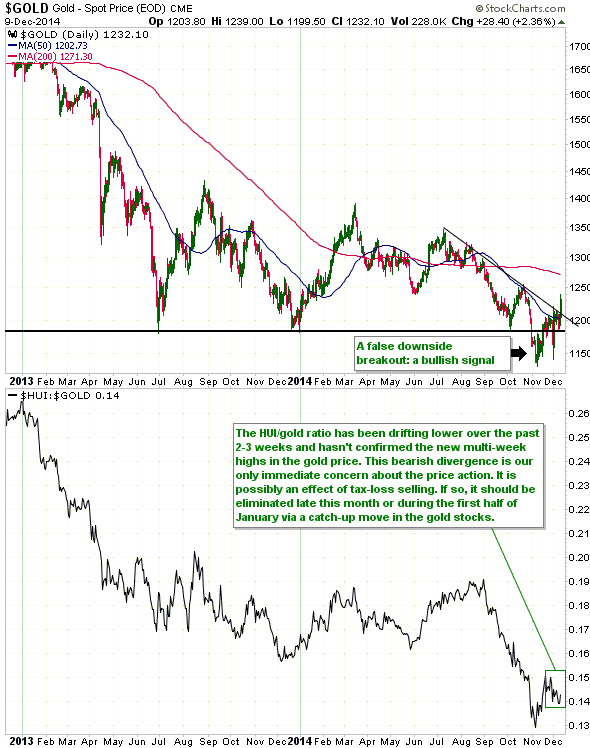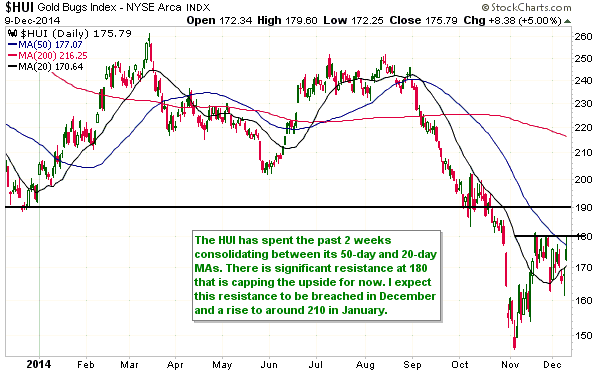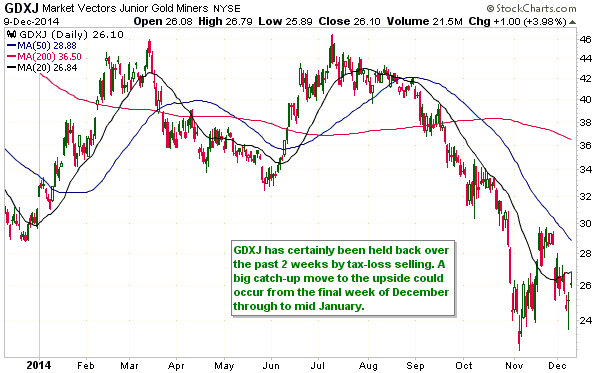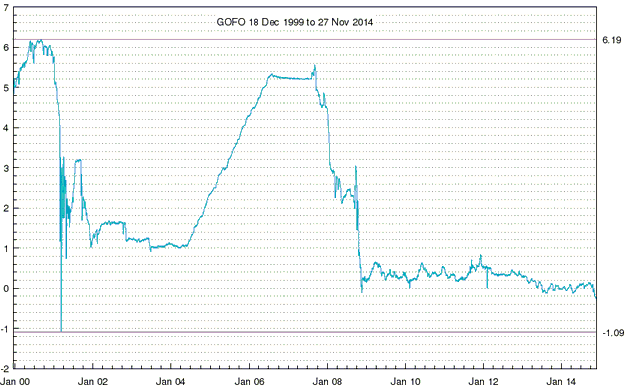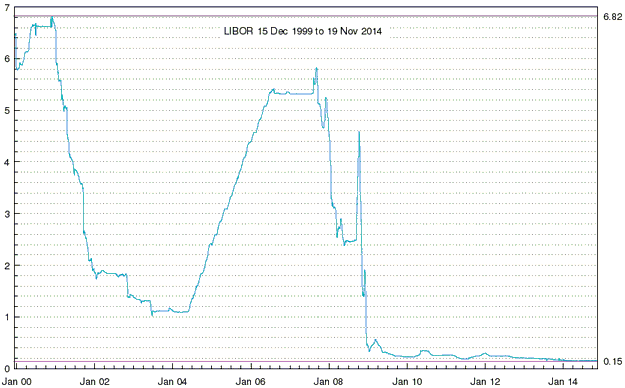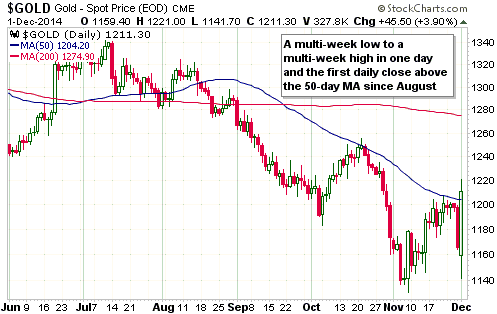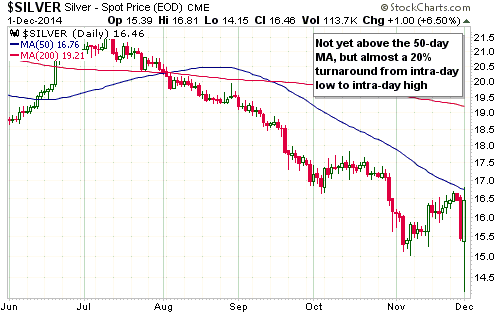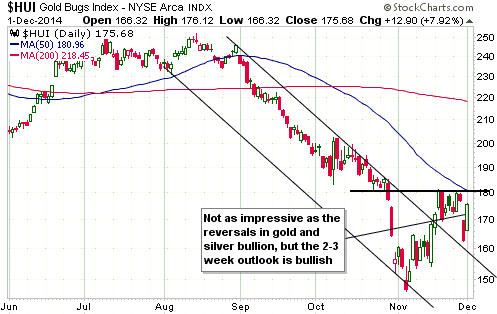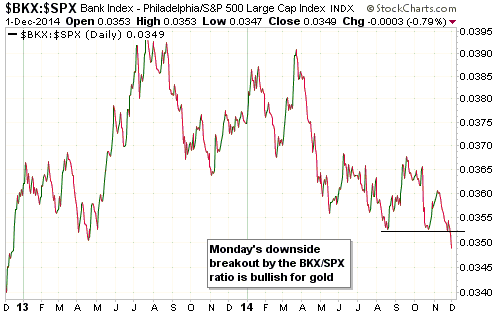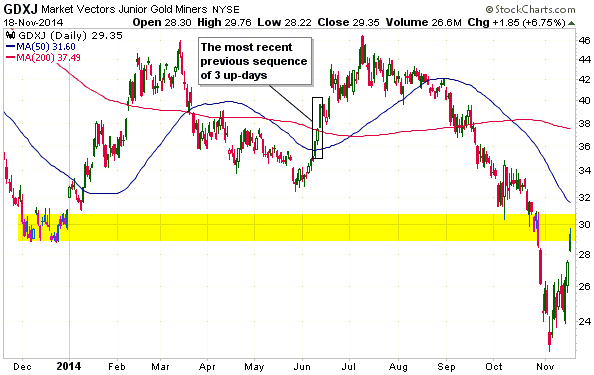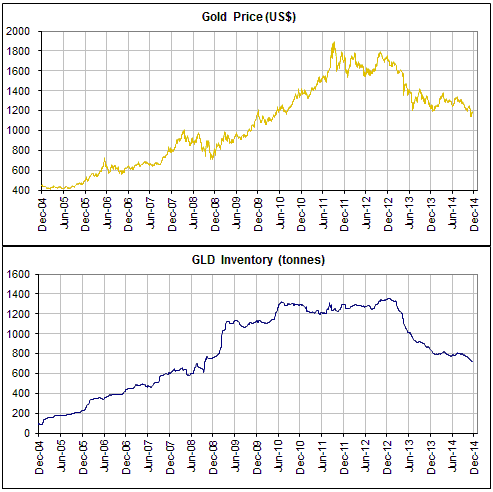The historical record indicates that the gold-mining sector performs very well during the first 18-24 months of a general equity bear market as long as the average gold-mining stock is not ‘overbought’ and over-valued at the beginning of the bear market. Unfortunately, the historical sample size is small. In fact, since the birth of the current monetary system there have been only two relevant cases.
The first case involves the general equity bear market that began in January of 1973 and continued until late-1974. This bear market resulted in peak-to-trough losses of around 50% for the senior US stock indices.
The following chart comparison of the Barrons Gold Mining Index (BGMI) and the S&P500 Index shows that the gold-mining sector commenced a strong upward trend near the start of the general equity bear market. During the bear market’s first 20 months, the BGMI gained about 300%.
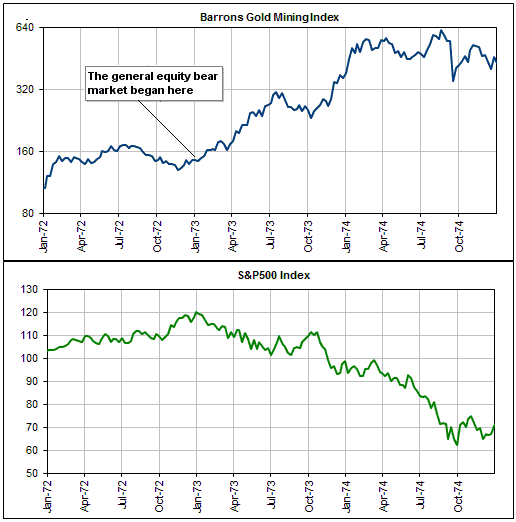
The second case involves the general equity bear market that began in September of 2000 and continued until early-2003. This bear market also resulted in peak-to-trough losses of around 50% for the senior US stock indices.
The following chart comparison of the HUI and the NYSE Composite Index (NYA) shows that the gold-mining sector commenced a strong upward trend about 2.5 months after the start of the general equity bear market. Despite the fact that the HUI suffered a substantial percentage decline during this 2.5-month period, it still managed to gain about 200% over the course of the bear market’s first 20 months.
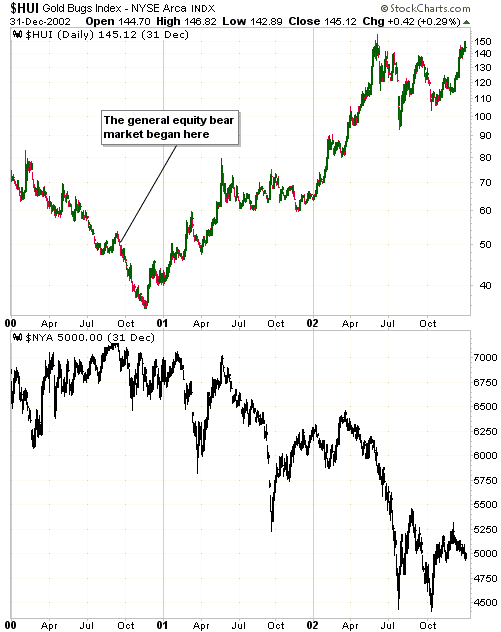
The gold-mining sector is currently a long way from being ‘overbought’ and over-valued. In fact, by some measures it was recently as ‘oversold’ as it ever gets. The historical cases cited above would therefore be relevant if a general equity bear market were to begin in the near future.
On a related matter, the only times when the owners of gold-mining stocks need to fear a general equity bear market are those times when the gold-mining sector has trended upward with the broad stock market during the 6-12 months prior to the start of the general equity bear market. Consequently, in the unlikely event that the current bull market in US equities continues for one more year and gold-mining stocks trend upward during that year, the gold-mining sector will then be vulnerable to the downward pull of a general equity decline.
 Print This Post
Print This Post

